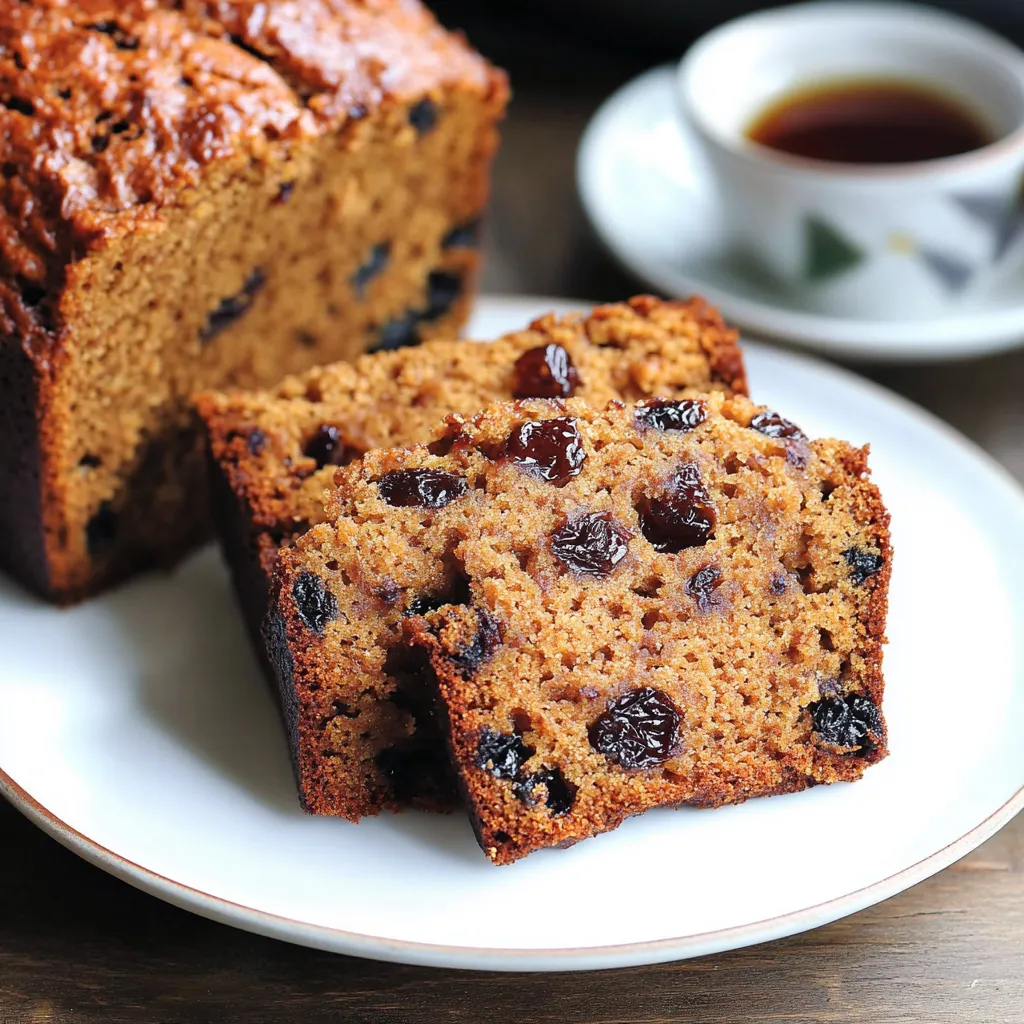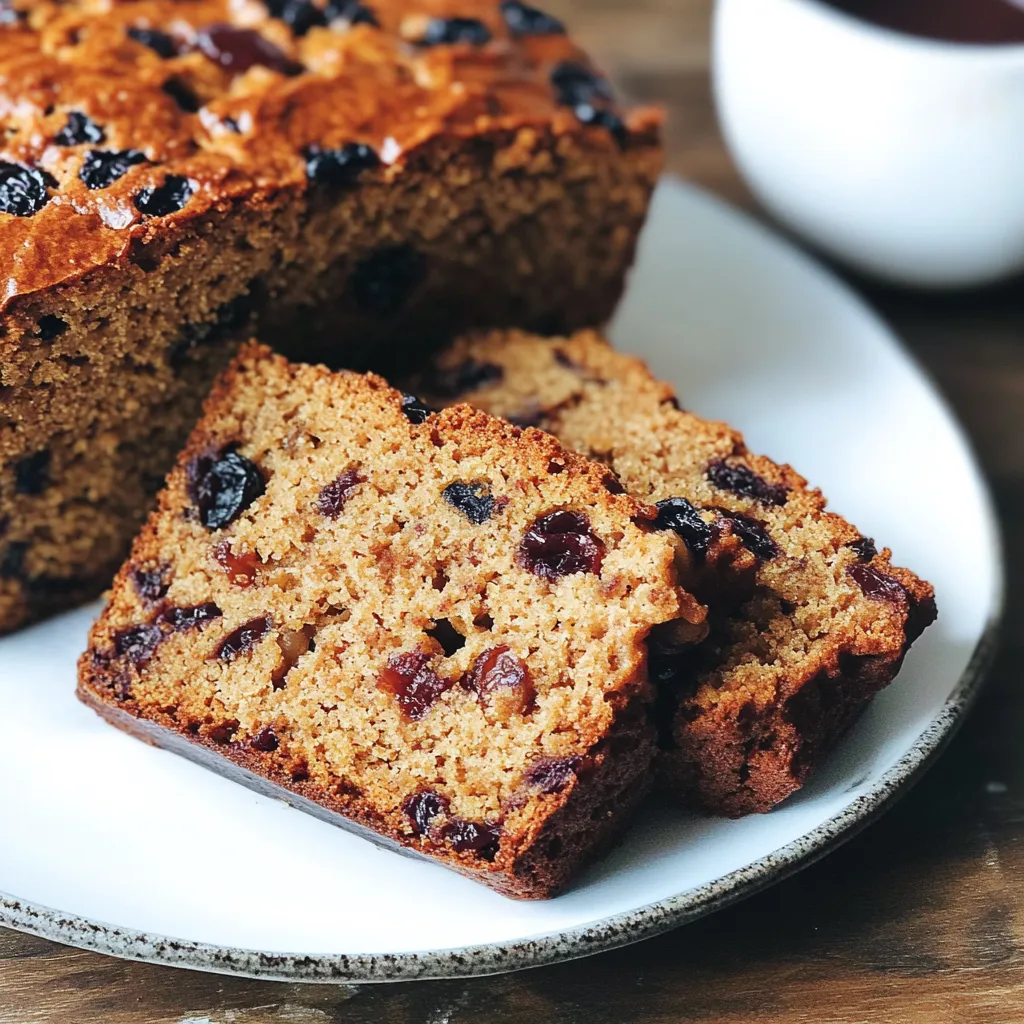 Pin it
Pin it
This moist, lightly spiced tea loaf brings back fond memories of cozy afternoons with my grandma. The simple act of soaking dried fruits in tea transforms ordinary ingredients into something truly special that keeps beautifully for days.
I first discovered this recipe during a rainy weekend in the English countryside. The bed and breakfast owner shared her family recipe, and it's become my go-to comfort bake whenever I need something nostalgic yet simple.
Ingredients
- Strong brewed black or green tea: Creates the moisture and subtle flavor base while eliminating the need for butter or oil
- Mixed dried fruits: Including raisins, sultanas, goji berries and candied citrus peel provide natural sweetness and chewy texture. Look for plump unsulphured varieties for best flavor
- Unrefined cane sugar or coconut sugar: Adds caramel notes that complement the tea. Choose organic for best results
- Marmalade or apricot jam: Contributes moisture and a subtle citrus brightness
- Wholemeal flour: Adds nutty depth and nutritional value. Sift it for a lighter texture
- Baking powder: Ensures proper rise despite the dense fruit
- Cinnamon or mixed spice: Provides warmth and complexity. Use freshly ground if possible
- Water: Helps achieve the perfect batter consistency
Step-by-Step Instructions
- Fruit Soaking:
- Start by brewing a strong cup of tea using boiling water and allow it to steep for 5 minutes for maximum flavor. Pour this over your dried fruit mixture in a large bowl, ensuring all fruit is submerged. Cover with a plate and let sit undisturbed for 4-5 hours or overnight on your countertop. This crucial step plumps the fruit and infuses it with tea flavor.
- Preparation:
- Carefully grease your loaf pan, ensuring all corners are coated. Line the bottom with parchment paper for easy removal later. Preheat your oven to exactly 160C or 325F, using an oven thermometer for accuracy as proper temperature is crucial for even baking.
- Mixing:
- Transfer your soaked fruit along with any remaining tea liquid into a large mixing bowl. The fruit should appear plump and juicy. Add sugar and marmalade, stirring until completely incorporated. The mixture will look glossy and thick. Sift the flour, baking powder and spices directly over the fruit mixture to prevent lumps. Add water and fold everything together using a gentle cutting motion until no dry spots remain. Avoid overmixing which can make the loaf tough.
- Baking:
- Spoon the thick batter into your prepared loaf pan, taking time to push it into corners and create a level top. The batter will be dense and sticky. Bake in the middle rack for exactly 1¼ hours. Check doneness by inserting a skewer into the center it should come out clean with perhaps a few moist crumbs. Allow the loaf to rest in the tin for at least 30 minutes before transferring to a wire rack for complete cooling.
 Pin it
Pin it
The humble marmalade might seem like a small addition, but it's my secret weapon in this recipe. My grandmother always said the bitter orange notes balance the sweetness perfectly. When we bake this together at Christmas, the whole house fills with a spiced fragrance that signals the holidays have truly begun.
Serving Suggestions
This versatile loaf can be enjoyed plain or dressed up depending on the occasion. For breakfast, try toasting slices lightly and spreading with a thin layer of salted butter. For afternoon tea, serve in thin slices alongside a pot of Earl Grey. My family particularly enjoys it with a thin spread of cream cheese and a drizzle of honey for a more substantial treat.
Storage Tips
The tea loaf improves with age over the first few days as the flavors meld and deepen. Store it wrapped tightly in parchment paper then placed in an airtight container. Keep at room temperature for up to 3 days or refrigerate for up to a week. For longer storage, slice the completely cooled loaf and place parchment between pieces before freezing in a sealed container. Defrost slices at room temperature or toast from frozen.
Historical Background
Tea loaves have been a staple in British kitchens since the Victorian era, when afternoon tea became a fashionable social custom. Originally created as a thrifty way to use leftover tea, these loaves were perfected during wartime rationing when eggs and butter were scarce. Regional variations exist throughout the UK, with Yorkshire favoring a darker tea blend and Welsh versions sometimes including mashed potato for extra moisture.
Ingredient Substitutions
The beauty of this recipe lies in its flexibility. You can customize the dried fruit mixture based on personal preference or what you have available. Dried cranberries, chopped apricots, figs, or dates all work wonderfully. If you avoid refined sugar, pure maple syrup makes an excellent alternative use slightly less to account for the additional moisture. For gluten sensitivity, a good quality gluten-free flour blend with xanthan gum works remarkably well, though the texture will be slightly different.
 Pin it
Pin it
Frequently Asked Questions
- → What type of tea is best for making this tea loaf?
Strong black tea works best, such as English Breakfast or Earl Grey, but green tea can also be used for a lighter flavor.
- → Can I use different dried fruits?
Yes, you can customize the fruit mix with your favorites, such as cranberries, cherries, or figs, alongside the raisins and sultanas.
- → How do I store the tea loaf to keep it fresh?
Store the loaf in an airtight container in the fridge for up to five days, or freeze it for longer storage. Thaw thoroughly before serving.
- → Can I make this tea loaf gluten-free?
Yes, simply substitute wholemeal flour with a gluten-free flour blend designed for baking. Ensure all other ingredients are also gluten-free.
- → What can I serve with this tea loaf?
This tea loaf is delicious on its own, but you can add a spread of butter or jam for extra indulgence. Pair it with a hot cup of tea or coffee for a perfect treat.
